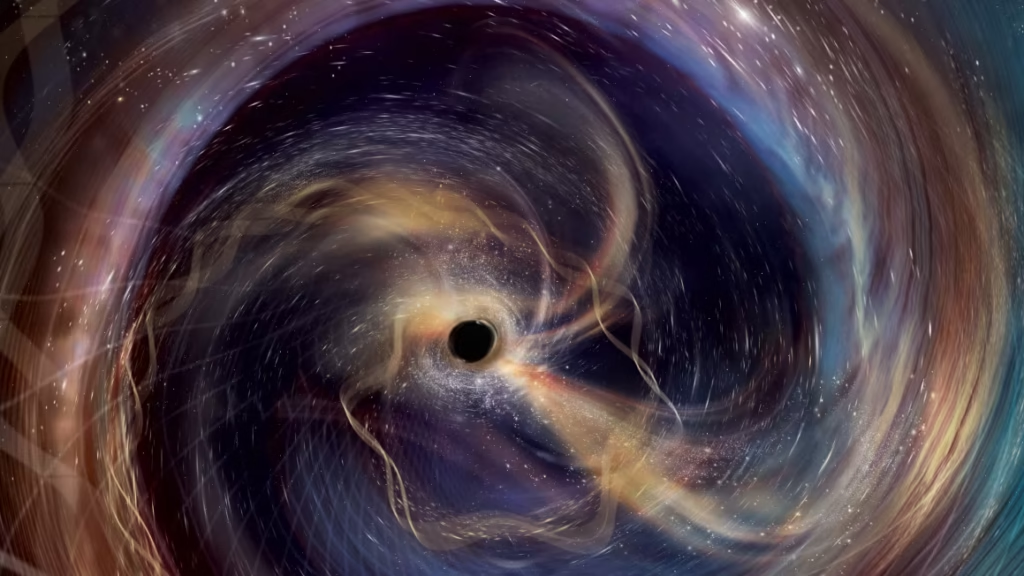Astronomers have observed one of the clearest black hole collisions to date, offering remarkable confirmation of two of the most important ideas in modern physics. Using advanced gravitational wave detectors, scientists recorded ripples in space-time from the merger of two massive black holes more than a billion light years away.
The event matched the predictions of Albert Einstein’s theory of general relativity with extraordinary precision. As the two black holes spiraled together and merged, their combined mass created a new, larger black hole spinning at incredible speed. The gravitational waves detected on Earth carried exactly the patterns physicists expected, proving once again that Einstein’s century-old equations still hold true in the most extreme environments of the universe.
Equally significant was the validation of Stephen Hawking’s “area theorem,” which states that the surface area of a black hole can never shrink. The final black hole’s surface area was larger than the combined areas of the originals, confirming Hawking’s decades-old prediction. Researchers also reported evidence supporting the “no-hair theorem,” which argues that black holes are defined only by their mass and spin, with no other unique features surviving the merger.
This breakthrough was made possible by new upgrades in gravitational wave detection technology, which captured the collision with greater clarity than ever before. Known as GW250114, the signal represents a milestone in astrophysics and provides one of the most detailed looks yet into the nature of black holes.
For scientists, the findings not only validate the work of Einstein and Hawking but also open the door to deeper exploration of how gravity and quantum physics interact. For the public, it is a reminder that some of the universe’s greatest mysteries are slowly being unlocked, one cosmic collision at a time.


